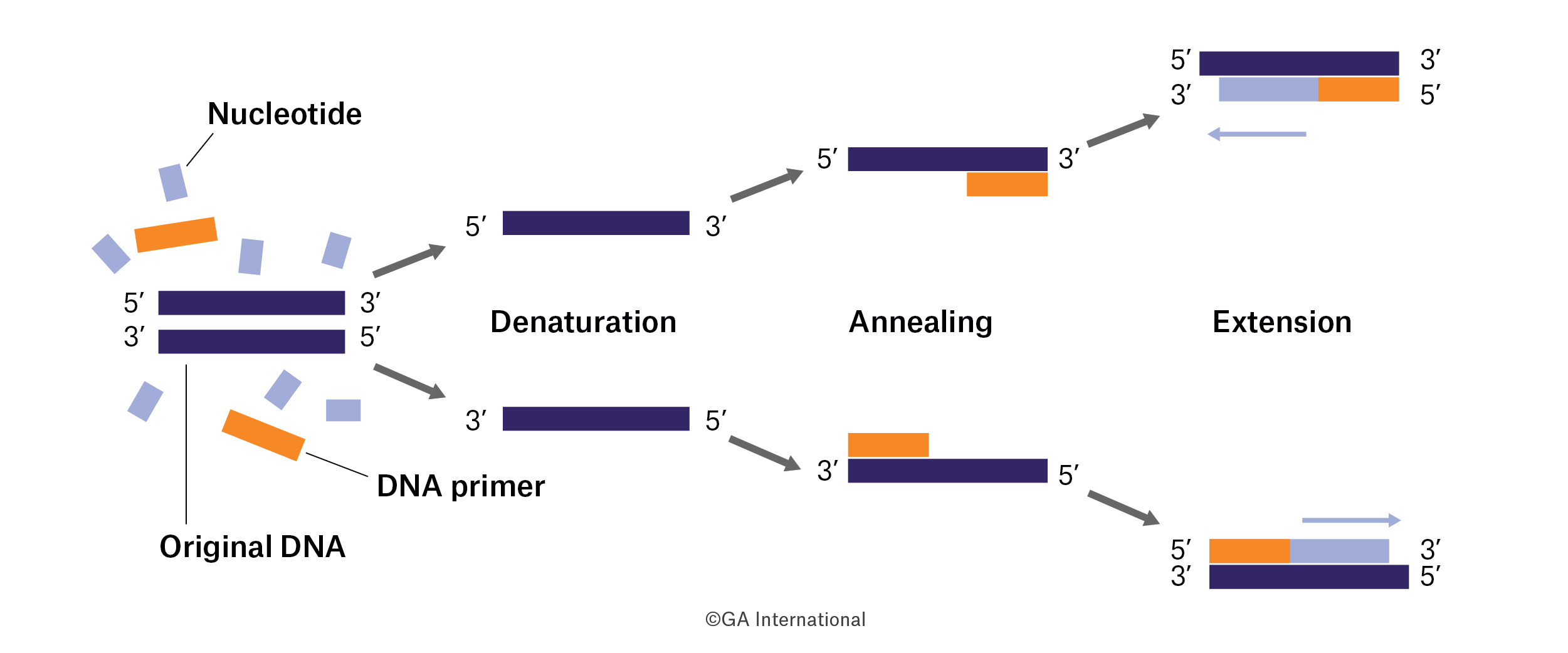49 4.2: RT-qPCR
The polymerase chain reaction (PCR) was a revolutionary invention in 1984 (Deepak, et al). PCR allowed scientists to amplify a very small portion of DNA or RNA into millions of copies in order to better study the sample. Before this invention, DNA amplification could take many days to complete whereas PCR now only takes a couple of hours.
How it works
There are four main steps to the PCR method: denaturation, annealing, extension, and amplification. In order for PCR to work it requires a DNA template, DNA polymerase, primers, and nucleotides. The entire process takes place in a thermal cycler.

- Denaturation: The DNA sample is heated in order to denature the proteins and separate the double stranded DNA into single stranded DNA.
- Annealing: Selected primers bind to flanking regions of the target sequence.
- Extension: DNA polymerase such as Taq polymerase extends the 3’ ends of primers using nucleotides.
- Amplification: The process is repeated 20-30 times to exponentially amplify copies of target DNA
There have since been many updates to the traditional PCR method. One such method is called a real time quantitative polymerase chain reaction (RT-qPCR). As the PCR copies exponentially, inhibitors in the reaction and reagent limitations cause the reaction rate to plateau so that it no longer produces viable copies of the DNA. The difference between PCR and RT-qPCR is that the latter allows a more reliable detection of DNA as the data can be viewed in real time. This advancement in technology has helped scientists all over the world to conduct many important experiments.
RT-qPCR and LIF
There are many applications to RT-qPCR as it is a very versatile method.
The question now remains, how is this related to LIF?
LIF is a cytokine that needs to be studied within animal models to observe its functions. This makes the method of RT-qPCR very useful as it can essentially be used in most in vitro studies. In a study by Pascual-García, et al. (2019), they used this method in order to study the DNA of mice transfected with LIF plasmid. They required multiple copies of this DNA to observe the spread and effect of LIF in a tumor microenvironment.
Test your knowledge:
